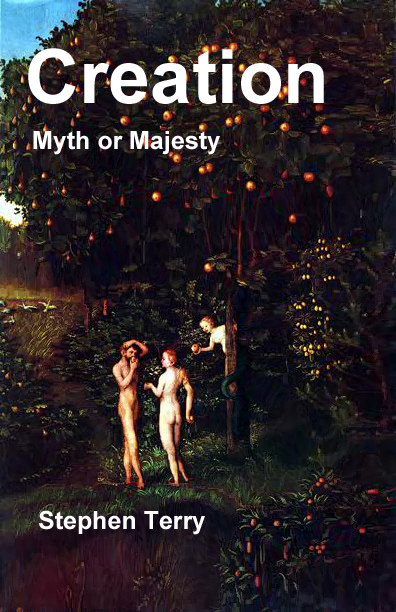Jesus’
Teachings and the Great Controversy
Stephen
Terry
Commentary
for the February 13, 2016 Sabbath School Lesson
 “Enter
through the narrow gate. For wide is the gate and broad is the road that leads
to destruction, and many enter through it. But small is the gate and narrow the
road that leads to life, and only a few find it.” Matthew 7:13-14, NIV
“Enter
through the narrow gate. For wide is the gate and broad is the road that leads
to destruction, and many enter through it. But small is the gate and narrow the
road that leads to life, and only a few find it.” Matthew 7:13-14, NIV
The story of Jesus’ life here on Earth begins with His
incarnation and the miraculous events surrounding that birth. Then except for a
single Passover incident while visiting the temple in Jerusalem mentioned by
Luke,[i] the scriptures are silent
about what happened to Jesus over the three decades when He grew from a child
to a man. There are other sources that seek to unveil this period, perhaps the
most notable being the Gospel According to Thomas. However, none of these
sources found their way into our present biblical canon. While there is not
universal agreement even today on the canon of the Old Testament, Christianity
by and large has accepted the canon for the New Testament established by the
Roman Catholic Church in the late Fourth Century, C.E. The Eastern Orthodox
Church came into agreement with that canon by including the book of Revelation
in the following century.[ii]
This may be problematic for some Protestants who claim
they adhere to the doctrine of sola
scriptura, the Bible as the sole authority for faith and practice. In
response, our Catholic friends might ask, “And who determined what was in that
Bible?” Of course the answer to that is the Catholic Church, most notably at
the Council of Trent. They may go on logically to say that since the church
determines what is in the Bible, then the church is the ultimate authority even
over the Bible. Protestants on the other hand might rejoin that God preserved
the inspired scriptures in spite of the efforts of councils and prelates to undermine
His will. In any event, most traditions use the same New Testament canon,
regardless of how it came about.
What is significant about the New Testament is that it
ends its silence about Jesus when He is baptized and begins His ministry. The
accounts of the gospel writers are filled with the three and a half years of
Jesus’ teachings. This may perhaps be because that period coincides with the
time that the Disciples knew Him and walked with Him. But the accounts of the
Nativity and Luke’s temple visit story were not during that period, so they may
have been recounted by Jesus or perhaps later, after Jesus’ death and
resurrection, by Mary, His mother. Interestingly though, although John took in
Mary, apparently at Jesus’ request,[iii] it was the Gospels of
Matthew and Luke and not the Gospel of John that gave us anything about Jesus
before His ministry began, including the Nativity. If Mary was the source of
this information and she was living with John that seems unusual. Perhaps Jesus
placed a veil of silence over His past and Mary continued to honor that.
Another possibility for the source could be Elizabeth
who figures prominently in Luke’s Gospel for the Nativity and could also be the
source of the story of the Passover visit to Jerusalem. Extended families may have often traveled
together for festivals. Even today we have special holidays were those in the
extended family circle are made a part of the celebration. This could explain
John’s silence about both the Nativity and Jesus’ childhood, although it does
not necessarily explain Mark’s. His Gospel, deemed to be the earliest written,
simply may have not had access to the information contained in Matthew and
Luke, which may argue strongly for someone other than Jesus as the source of
the information.
So where do we go with all of this? Perhaps we can
understand that in looking at the Gospels, it is important to not let details
obscure the general concepts presented. Maybe more notably than anywhere else in
the Bible than the Book of Revelation Jesus’ teachings present a dualistic view
of the universe and therefore a parallel understanding to the perspective of much
of modern Christianity. The universe is divided over a struggle between good
and evil, and that struggle, which began in heaven, is now being fought on
Earth.[iv] Humans for their part are
taking sides in this cosmic battle. Those who side with Jesus Christ, do so
voluntarily, while those who do not follow Christ are scooped up by His
adversary, the Devil.[v] There is no neutral
ground. Pretending the battle does not concern us or that it does not exist
will prove as fruitful as the proverbial ostrich hiding its head in the sand.
Perhaps this controversy is the ultimate source of every
conflict portrayed in literature and art. Every historical battle fought may be
a living representation of what took place long ago in heaven. We may deny that
such a conflict exists, but conflict seems to have become part and parcel with
who we are. For all of our desire for peace and an end to conflict, it eludes
us and we seem unable to come to grips with why. The Gospels attempt to address
that, especially in the Sermon on the Mount recorded by Matthew.[vi] Selfishness seems to be what
Jesus saw as the foundation of conflict. We want what we do not have and are
far too willing to diminish others in order to have it. Put simply, we would
rather see ourselves own an expensive newer car or a large beautiful home in an
upscale neighborhood, maybe even a huge place with acreage in the country than
to see the hungry fed, the oppressed set free, or the naked clothed.[vii] Perhaps this is why
Jesus said that who is not for Him is against Him. Such selfishness is
completely at odds with the principle of giving shared by Jesus who said that
if we are sued for the shirt off our back, we should give our coat as well.[viii] Our nature is to grasp
tightly what we consider ours and only releasing it when our hands are “cold
and dead.”
Perhaps we also can see in this the root of much
struggle in life. We work hard so we can have things that we may not need but want.
Then we work continually to cover the maintenance involved. The house, the cars
and the boat all need insurance, maintenance, registration and updating. Instead
of working to have these things, we can get to the point where we are working
for these things. Like the lifeless idols that our ancestors placated with
precious offerings and food that could have helped the poor, we offer up the
hours days, weeks, months and years of our lives laboring to maintain these
modern deaf and dumb idols.
Sadly as Job learned,[ix] no matter how much we
accumulate through those many years of effort, it can all be swept away in an
instant. What profit is it to us then if we are enrolled in the selfish side of
this controversy, only to lose everything after many years effort? Do we simply
begin again, knowing there are not enough years left of our lives to achieve
our goal? At what point is it enough?
Even more importantly, what does our example say to
others? When we own that big, beautiful home on the hill, what does that tell
others they should focus on? Isn’t it a testimony that wealth should be the
focus of life? And if they have no legal means to achieve that wealth, does it
place before them a temptation to do evil in order to have it? Don’t we see
that played out in the poor slums in our cities where drug dealing and the
illusion of wealth it brings with it are seen as answers to the grinding
poverty in those neighborhoods?
When I was
twenty-one, I spent far too much money on a Porsche 911T. It took most of my
military paycheck each month to make the payments on the luxury sports car.
That Christmas, I went door-to-door with my church on the annual Ingathering Campaign
seeking donations for the poor. As we tallied up the receipts each evening, I began
to realize that I was spending more for that car than we would raise for the
entire campaign. The Holy Spirit was convicting me over this, and I felt my
face flush with shame. This coupled with the fact that the car created a
never-ending temptation to flaunt the rules of the road brought me to trade the
Porsche in for a much more sensible and frugal vehicle. I would like to say
that doing that solved all the poverty in the world, but of course it didn’t. However,
it did free up more of my income so that I was able to contribute more to the
solution and be less a part of the problem.
Perhaps we all need only become aware that our blessings
are given to us to be a blessing to others who have not been so blessed.
Putting money into the coffers to build big, beautiful churches may only institutionalize
the same selfishness we have on an individual level, for it does little to help
the poor while helping us to feel prosperous and successful as a denomination.
Maybe we could all do with a little consideration of whose side we are
endorsing in the great controversy between good and evil by how we are ordering
our priorities.
